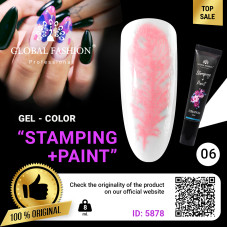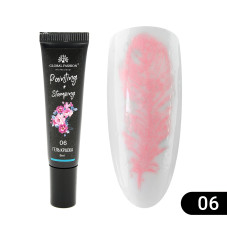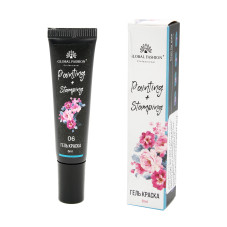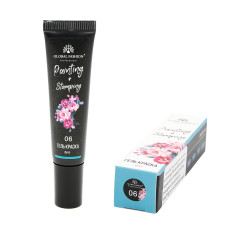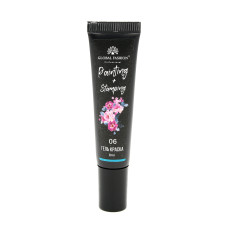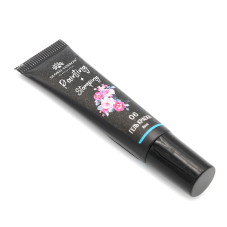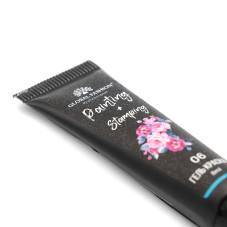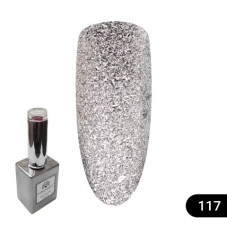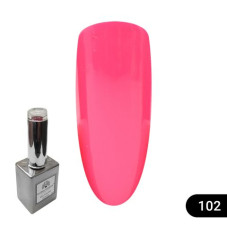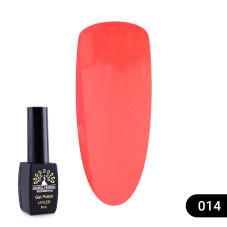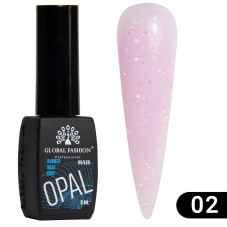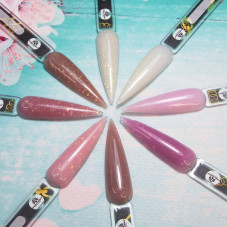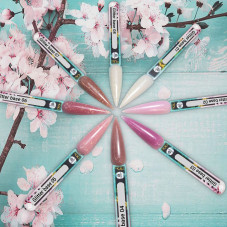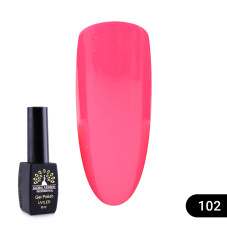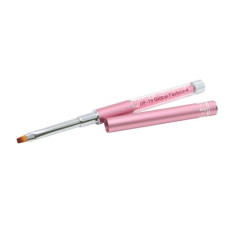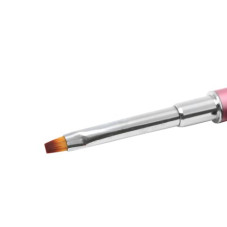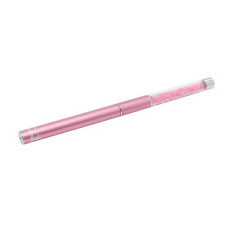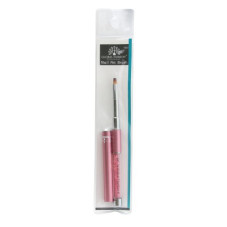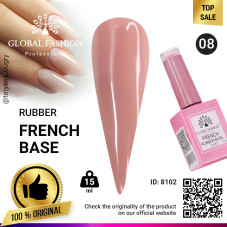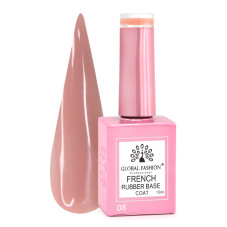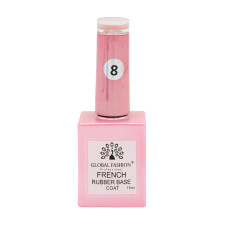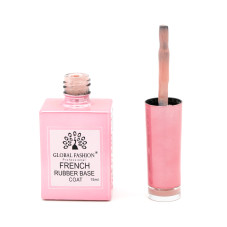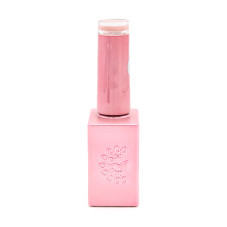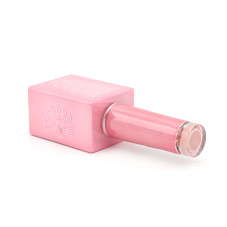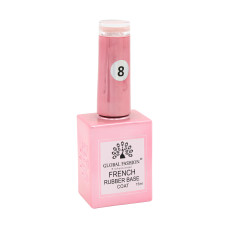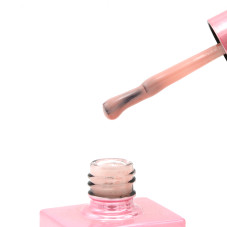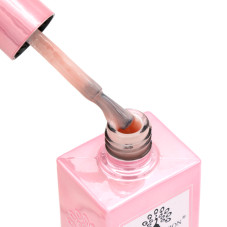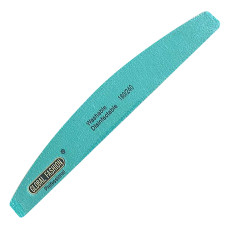A manicure: How to avoid making a mistake?
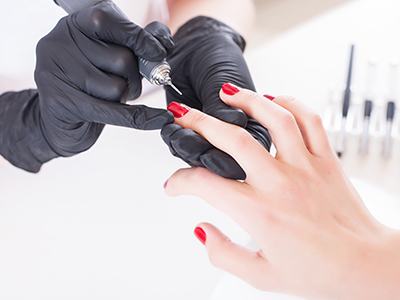
A machine manicure is a whole technology, not easy in some places, and you have to take some courses to learn it. And even when the craftsman already has some skills, he can still make some mistakes in the technique of the hardware manicure. He who does nothing makes no mistakes, doesn't he? In hardware manicure, there are a few mistakes that masters make most often. Let's talk about them and try to show you what you need to pay attention to when performing a hardware manicure.
MISTAKES IN HARDWARE MANICURES
ERROR 1: Failure to disinfect hands and nails
There is a perception that hand and nail disinfection is only needed during a trim manicure, where there is a risk of «catching» infection through a cut with sharp scissors. The rules for a hardware manicure require prior disinfection of the cutter heads. In this case, many novices forget about the need to disinfect the hands and nails themselves, considering it unnecessary. During the procedure, there is a high probability of micro-injuries. The damaged area may be infiltrated by germs and inflammation may occur. To avoid such unpleasant consequences, Sterillium, Octenisept or Chlorhexidine should be purchased and applied to the hands before the procedure.
ETHOUGH: When treating hardware cutters, don't forget to disinfect your hands and nails as well.
ERROR 2: The cuticle is not fully exposed
To completely remove the cuticle, the cuticle has to be lifted by at least 90 degrees to prevent the cuticle from growing back. This results in the cuticle growing back after 2-3 days. Uncovered cuticles are also easy to damage with a rotary cutter.
ETHOUGH: Open the cuticle completely.
_________________________________________________________________________________
Related articles: How to choose a manicure lamp? Let's understand the nuances!, Manicure extractor. Master and client safety
_________________________________________________________________________________
ERROR 3: Incorrect finger grip when milling
When working on the cuticle, hold the finger from above when working on the right side of the nail and grip from below when moving to the left side. When gripping with the left hand, support the finger with the little finger of the right hand to ensure steadiness of movement. It is also advisable to push back the pad with the little finger to gain better access to the lateral cuticles. If the finger is not gripped correctly, it will be difficult to keep the cutter with the blunt end parallel to the nail plate.
ETHOUGH: Always be careful with your finger grip.
ERROR 4: Incorrect cutter selection
First-time masters can make the mistake of choosing the wrong cutter. Cutters should be chosen individually. Firstly, certain shapes of cutters are needed for different stages of manicure. Secondly, the nozzles should be selected according to the personal characteristics of the client - the condition of the hands and nails, the density and sensitivity of the skin.
The main forms of hardware cutters:
- Cylinder shapes the free edge of the nail plate and models the arch of the nail.
- The blunt end cone is used for uncovering the cuticle.
- The side roller grooves are exposed and the cuticle is removed with a ball-head mill.
- The needle burr is an excellent alternative for cleaning the pterygium.
- The flame burr is suitable for treating lateral rollers, removing calluses and fissures.
- The rounded cylinder grinds and smoothes the surface of the nail plate.
ETHOUGH: Choose the right cutter shape: e.g. a blunt-tipped cone is best for uncovering the cuticle and a rounded cylinder for smoothing.
_________________________________________________________________________________
Here is an article about the topic: Cutters for a hardware manicure. How to choose?
_________________________________________________________________________________
ERROR 5: Incorrect cuticle-ball technique
The work with the ball cutter should be done in two steps. First, the cuticle should be turned out with the ball, i.e. the nozzle should be passed lightly under the cuticle so that it is lifted at a 90° angle. After this, the cuticle is peeled off with the ball. It will come off easily and gently. Skipping the first step and going straight ahead with the half-cuticle cutter can lead to micro-injuries and burrs.
ETHOUGH: Always follow the two steps in the cuticle peeling technique.
ERROR 6: Incorrect choice of abrasiveness
The abrasiveness of the burrs affects the quality of work at different stages of the manicure. For example, it is better to remove artificial surfaces with a stiffer cutter. With it you do not have to long to «saw» the same area of the nail. First-time masters mistakenly believe that the cuticle-cleaning ball should have a soft abrasiveness, starting to work with a cutter with a red or even yellow notch. This is wrong. The efficiency of the cuticle-cleaning process is severely reduced and it is possible to tear the cuticle head. Another disadvantage is that the soft-tipped ball quickly gets clogged and by the fifth nail, it has to be replaced with a new one.
ETHOUGH: Remember that cuticle lifts and filing requires cutters with different abrasiveness.
ERROR 7: Cutter speed too high or too low
The speed of hardware manicure devices can reach up to 30000 rpm. Professionals can afford to work at 10000-12000 rpm, while novice masters are recommended to work in the 4000-6000 rpm range. Once you start work, you should set the speed to 5000 rpm and then vary it according to your feeling, or that of the customer. If the cutter slips, you should increase the speed, and if you feel a burning sensation, it's better to reduce the speed a little. You should also listen to the recommendations of professionals, analyse your experience and take into account your skin conditions.
ETHOUGH: Always be careful about the choice of cutter speed.
_________________________________________________________________________________
Article on this topic: Manicure router. Manicure art helper
_________________________________________________________________________________
ERROR 8: Incorrect sequencing of the machine manicure steps
Without a good cuticle lift and a cleaned pterygium, it will be difficult to remove the skin with a ball and even a polisher cannot achieve a perfect cuticle surface. Failure to follow the steps will affect the quality of the manicure and its lifespan.
In addition to removing the old coating, nail treatment with the machine includes 4 steps:
- Opening the cuticle.
- Clearing the cavities of the lateral rollers and the area under the cuticle.
- Removing the lifted cuticle.
- Giving the cuticle area a smoothing effect.
It is important to keep these steps in sequence. If the cuticle is not lifted and the pterygium is not scraped off, it is difficult to remove the skin with a buffing ball. And, of course, if the sequence of steps is not adhered to, it will affect the quality and durability of the manicure.
ETHOUGH: Observe the sequence of the steps: first lift the cuticle, then clean the lateral sinuses and the undercuticular area, and only then grind away the cuticle.
_________________________________________________________________________
Article on this topic: A machine manicure is a super technology!
_________________________________________________________________________
ERROR 9: Prolonged milling of one area
Working the cutter in the same area of the nail will leave gouges, micro-traumas, and burrs on the nail plate. Professional nail technicians advise not to stay in one place for more than 1 second. The cutter should move constantly, moving from area to area. Work should be started at an optimum RPM of 4000-5000 per minute.
ETHOUGH: Do not hold the cutter in the same area for longer than one second.
ERROR 10: Treating hands with the machine with damaged skin
If there is inflammation or burrs on the skin near the nails, a machine manicure is contraindicated. It's better to clean your nails first, treat the inflammation, and then give your nails a beauty treatment. If the nails are wet, the nail plate is extremely difficult to treat. The nozzles can become clogged with damp particles and you will have to stop the process to get the cutters back in working order.
ETHOUGH: Do not treat hands with inflamed skin with the machine, first tidy up the skin.
ERROR 11: Failure to disinfect hands and nails
There is a perception that hand and nail disinfection is only necessary during a trim manicure, where there is a risk of «catching» an infection through a cut with sharp scissors. The rules for a hardware manicure require prior disinfection of the cutter heads. In this case, many novices forget about the need to disinfect the hands and nails themselves, considering it unnecessary. During the procedure, there is a high probability of micro-injuries. The damaged area may be infiltrated by germs and inflammation may occur.
To avoid such unpleasant consequences, Sterillium, Octenisept or Chlorhexidine should be purchased and applied to the hands before the procedure.
ETHOUGH: When treating hardware cutters, don't forget to disinfect your hands and nails as well.
The online shop Global Fashion offers you high quality products for nail extension and more!
View Global Fashion products --->
We also recommend other articles:
1. Correction of permanent nails. Why do you need it?
2. Brush for nail gel extensions: how to choose?
3. Hardware pedicure - convenient and easy
4. A manicure that attracts men
5. Paraffin therapy. Your body is beautiful and healthy
MISTAKES IN HARDWARE MANICURES
ERROR 1: Failure to disinfect hands and nails
There is a perception that hand and nail disinfection is only needed during a trim manicure, where there is a risk of «catching» infection through a cut with sharp scissors. The rules for a hardware manicure require prior disinfection of the cutter heads. In this case, many novices forget about the need to disinfect the hands and nails themselves, considering it unnecessary. During the procedure, there is a high probability of micro-injuries. The damaged area may be infiltrated by germs and inflammation may occur. To avoid such unpleasant consequences, Sterillium, Octenisept or Chlorhexidine should be purchased and applied to the hands before the procedure.
ETHOUGH: When treating hardware cutters, don't forget to disinfect your hands and nails as well.
ERROR 2: The cuticle is not fully exposed
To completely remove the cuticle, the cuticle has to be lifted by at least 90 degrees to prevent the cuticle from growing back. This results in the cuticle growing back after 2-3 days. Uncovered cuticles are also easy to damage with a rotary cutter.
ETHOUGH: Open the cuticle completely.
_________________________________________________________________________________
Related articles: How to choose a manicure lamp? Let's understand the nuances!, Manicure extractor. Master and client safety
_________________________________________________________________________________
ERROR 3: Incorrect finger grip when milling
When working on the cuticle, hold the finger from above when working on the right side of the nail and grip from below when moving to the left side. When gripping with the left hand, support the finger with the little finger of the right hand to ensure steadiness of movement. It is also advisable to push back the pad with the little finger to gain better access to the lateral cuticles. If the finger is not gripped correctly, it will be difficult to keep the cutter with the blunt end parallel to the nail plate.
ETHOUGH: Always be careful with your finger grip.
ERROR 4: Incorrect cutter selection
First-time masters can make the mistake of choosing the wrong cutter. Cutters should be chosen individually. Firstly, certain shapes of cutters are needed for different stages of manicure. Secondly, the nozzles should be selected according to the personal characteristics of the client - the condition of the hands and nails, the density and sensitivity of the skin.
The main forms of hardware cutters:
- Cylinder shapes the free edge of the nail plate and models the arch of the nail.
- The blunt end cone is used for uncovering the cuticle.
- The side roller grooves are exposed and the cuticle is removed with a ball-head mill.
- The needle burr is an excellent alternative for cleaning the pterygium.
- The flame burr is suitable for treating lateral rollers, removing calluses and fissures.
- The rounded cylinder grinds and smoothes the surface of the nail plate.
ETHOUGH: Choose the right cutter shape: e.g. a blunt-tipped cone is best for uncovering the cuticle and a rounded cylinder for smoothing.
_________________________________________________________________________________
Here is an article about the topic: Cutters for a hardware manicure. How to choose?
_________________________________________________________________________________
ERROR 5: Incorrect cuticle-ball technique
The work with the ball cutter should be done in two steps. First, the cuticle should be turned out with the ball, i.e. the nozzle should be passed lightly under the cuticle so that it is lifted at a 90° angle. After this, the cuticle is peeled off with the ball. It will come off easily and gently. Skipping the first step and going straight ahead with the half-cuticle cutter can lead to micro-injuries and burrs.
ETHOUGH: Always follow the two steps in the cuticle peeling technique.
ERROR 6: Incorrect choice of abrasiveness
The abrasiveness of the burrs affects the quality of work at different stages of the manicure. For example, it is better to remove artificial surfaces with a stiffer cutter. With it you do not have to long to «saw» the same area of the nail. First-time masters mistakenly believe that the cuticle-cleaning ball should have a soft abrasiveness, starting to work with a cutter with a red or even yellow notch. This is wrong. The efficiency of the cuticle-cleaning process is severely reduced and it is possible to tear the cuticle head. Another disadvantage is that the soft-tipped ball quickly gets clogged and by the fifth nail, it has to be replaced with a new one.
ETHOUGH: Remember that cuticle lifts and filing requires cutters with different abrasiveness.
ERROR 7: Cutter speed too high or too low
The speed of hardware manicure devices can reach up to 30000 rpm. Professionals can afford to work at 10000-12000 rpm, while novice masters are recommended to work in the 4000-6000 rpm range. Once you start work, you should set the speed to 5000 rpm and then vary it according to your feeling, or that of the customer. If the cutter slips, you should increase the speed, and if you feel a burning sensation, it's better to reduce the speed a little. You should also listen to the recommendations of professionals, analyse your experience and take into account your skin conditions.
ETHOUGH: Always be careful about the choice of cutter speed.
_________________________________________________________________________________
Article on this topic: Manicure router. Manicure art helper
_________________________________________________________________________________
ERROR 8: Incorrect sequencing of the machine manicure steps
Without a good cuticle lift and a cleaned pterygium, it will be difficult to remove the skin with a ball and even a polisher cannot achieve a perfect cuticle surface. Failure to follow the steps will affect the quality of the manicure and its lifespan.
In addition to removing the old coating, nail treatment with the machine includes 4 steps:
- Opening the cuticle.
- Clearing the cavities of the lateral rollers and the area under the cuticle.
- Removing the lifted cuticle.
- Giving the cuticle area a smoothing effect.
It is important to keep these steps in sequence. If the cuticle is not lifted and the pterygium is not scraped off, it is difficult to remove the skin with a buffing ball. And, of course, if the sequence of steps is not adhered to, it will affect the quality and durability of the manicure.
ETHOUGH: Observe the sequence of the steps: first lift the cuticle, then clean the lateral sinuses and the undercuticular area, and only then grind away the cuticle.
_________________________________________________________________________
Article on this topic: A machine manicure is a super technology!
_________________________________________________________________________
ERROR 9: Prolonged milling of one area
Working the cutter in the same area of the nail will leave gouges, micro-traumas, and burrs on the nail plate. Professional nail technicians advise not to stay in one place for more than 1 second. The cutter should move constantly, moving from area to area. Work should be started at an optimum RPM of 4000-5000 per minute.
ETHOUGH: Do not hold the cutter in the same area for longer than one second.
ERROR 10: Treating hands with the machine with damaged skin
If there is inflammation or burrs on the skin near the nails, a machine manicure is contraindicated. It's better to clean your nails first, treat the inflammation, and then give your nails a beauty treatment. If the nails are wet, the nail plate is extremely difficult to treat. The nozzles can become clogged with damp particles and you will have to stop the process to get the cutters back in working order.
ETHOUGH: Do not treat hands with inflamed skin with the machine, first tidy up the skin.
ERROR 11: Failure to disinfect hands and nails
There is a perception that hand and nail disinfection is only necessary during a trim manicure, where there is a risk of «catching» an infection through a cut with sharp scissors. The rules for a hardware manicure require prior disinfection of the cutter heads. In this case, many novices forget about the need to disinfect the hands and nails themselves, considering it unnecessary. During the procedure, there is a high probability of micro-injuries. The damaged area may be infiltrated by germs and inflammation may occur.
To avoid such unpleasant consequences, Sterillium, Octenisept or Chlorhexidine should be purchased and applied to the hands before the procedure.
ETHOUGH: When treating hardware cutters, don't forget to disinfect your hands and nails as well.
The online shop Global Fashion offers you high quality products for nail extension and more!
View Global Fashion products --->
We also recommend other articles:
1. Correction of permanent nails. Why do you need it?
2. Brush for nail gel extensions: how to choose?
3. Hardware pedicure - convenient and easy
4. A manicure that attracts men
5. Paraffin therapy. Your body is beautiful and healthy
Published: 31.03.2022 11:32
Times Read: 4347
